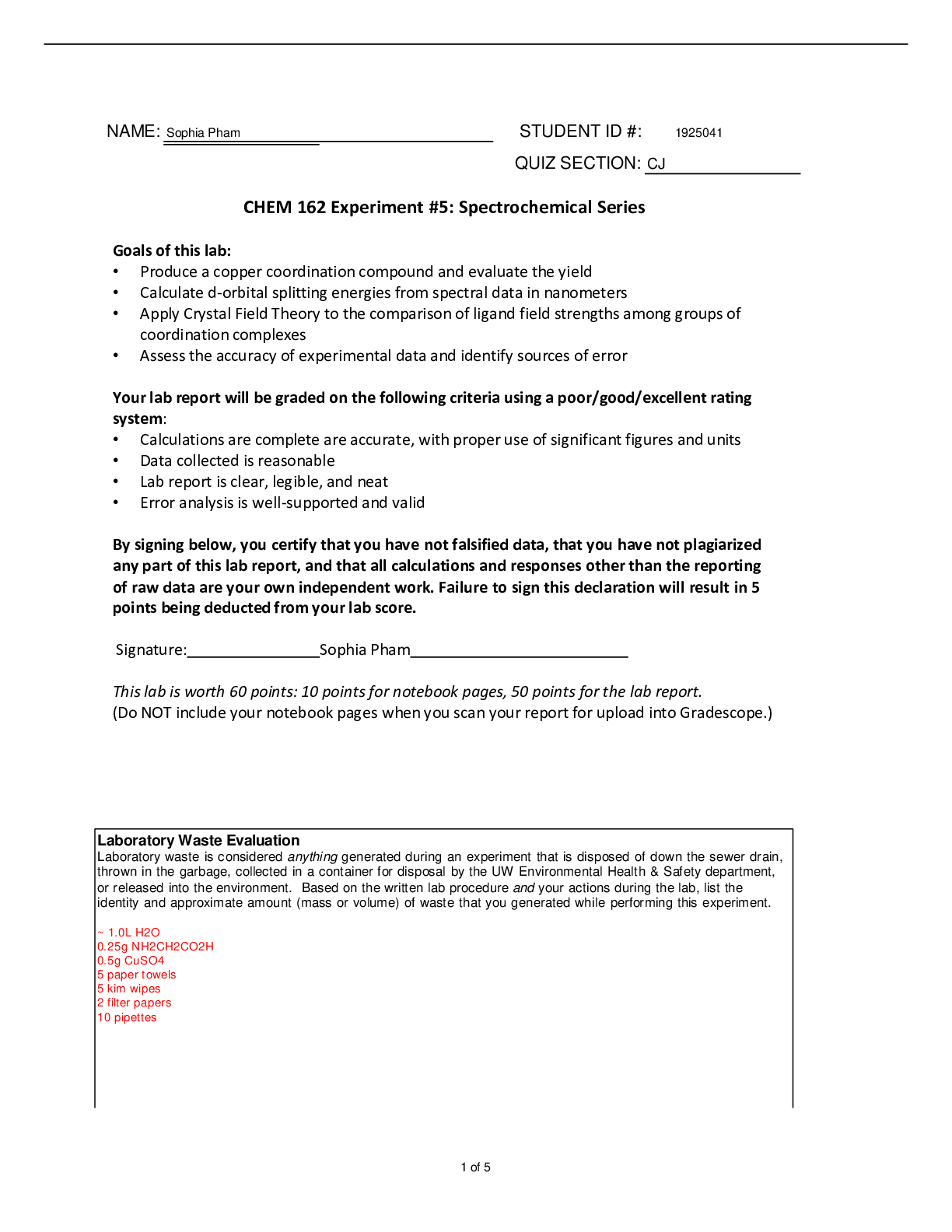Biology > Lab Report > Northern Virginia Community College - BIO 101 Lab 07, Cellular Respiration and Fermentation (All)
Northern Virginia Community College - BIO 101 Lab 07, Cellular Respiration and Fermentation
Document Content and Description Below
BIO 101 Lab 07: Measuring Cellular Respiration and Fermentation Notification: If you have a disability that makes it difficult to complete this lab, please contact your instructor. Please provide yo... ur instructor a copy of the Memorandum of Accommodation (MOA) from NVCC Disability Support Services. Objectives:____________________________________________________________ Distinguish between anaerobic and aerobic respiration. Measure the rate of oxygen consumption by living organisms during aerobic cellular respiration. Calculate metabolic rate from the experimental data. Measure the rate of yeast fermentation. Background:___________________________________________________________ All life requires energy to survive. The energy of glucose is used as fuel by nearly all living organisms to stay alive, to maintain homeostasis, and run all kinds of life activities. The energy stored in chemical bonds of glucose and other food molecules needs to be released and converted into a diffusible, usable form ATP. When oxygen is present, most living organisms prefer to use the aerobic respiration pathway because they can make more energy (ATP) than when they use the anaerobic pathway. However, living organism can also partially break down glucose in the process of anaerobic respiration to produce 2 ATP molecules from each glucose molecule when oxygen is not available. Aerobic respiration can produce up to 38 ATPs per molecule of glucose as compared to the 2 ATP that are generated in the anaerobic pathway. The three major parts of aerobic respiration are 1) Glycolysis, 2) Krebs Cycle (Citric Acid Cycle), and 3) Electron Transport Chain (ETC) and oxidative phosphorylation. The overall equation of cellular respiration is: C6H12O6 + 6 O2 → 6 CO2 + 6 H2O + 38 ATP We can measure the rate of cellular respiration by measuring the consumption of the reactants (glucose or oxygen), or by measuring the rate of production of the end products (carbon dioxide or water) of this process. The easiest component to measure is oxygen consumption. If the living organism is placed in a closed system with the carbon dioxide removed as it is produced, then the consumption of oxygen can be determined using a respirometer. The respirometer consists of a glass container sealed with a rubber stopper outfitted with a pipette. A compound such as potassium hydroxide is placed in the respirometer to remove the carbon dioxide generated. As the living organism within consumes oxygen, water will displace the gas in the pipette and the volume of oxygen consumed can be measured over time to calculate the rate of cellular respiration and metabolic rate [Show More]
Last updated: 2 years ago
Preview 1 out of 8 pages

Buy this document to get the full access instantly
Instant Download Access after purchase
Buy NowInstant download
We Accept:

Reviews( 0 )
$6.00
Can't find what you want? Try our AI powered Search
Document information
Connected school, study & course
About the document
Uploaded On
Apr 05, 2021
Number of pages
8
Written in
Additional information
This document has been written for:
Uploaded
Apr 05, 2021
Downloads
0
Views
154




.png)














